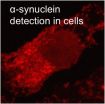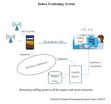(Press-News.org) WASHINGTON, December 17, 2012 — With the holiday season a high-risk period for packing on unwanted pounds, the American Chemical Society (ACS) today posted a new video that may lend perspective on this year's battle of the bulge. Produced by the world's largest scientific society, it explains the science behind the calorie counts and other information on those Nutrition Facts Labels on food packages. Available at www.BytesizeScience.com, the video tells the story of how scientists first determined the calorie content of food in the 1800s, and how scientists determine fat, protein and carbohydrate levels in foods today.
The video explains that the calorie content of food was determined in the late 1800s by chemist Wilbur O. Atwater. Atwater built a four-by-eight-foot device called a respiration calorimeter, which was big enough to allow a person to step into it. It measured the amount of heat they released, the amount of oxygen they consumed and the carbon dioxide they gave off after eating a variety of foods.
Using this device, Atwater was able to measure the precise amount of energy contained in thousands of food items. He found that carbohydrates and proteins were worth 4 calories per gram and fats about 9 calories per gram, which is about 1/28th of an ounce. This 4-9-4 rule remains embodied in today's Nutrition Facts Labels.
The video, from the award-winning Digital Services Unit in the ACS Office of Public Affairs, is based on an article in the latest issue of ChemMatters, ACS' quarterly magazine for high school students.
###
ChemMatters has been connecting chemistry to our everyday lives for the past 28 years. Published quarterly by the ACS Office of High School Chemistry, each issue contains articles about the chemistry of everyday life and is of interest to high school students and their teachers.
For additional entertaining video podcasts from ACS, go to www.bytesizescience.com. The Bytesize Science series is produced by the ACS Office of Public Affairs.
The American Chemical Society is a nonprofit organization chartered by the U.S. Congress. With more than 164,000 members, ACS is the world's largest scientific society and a global leader in providing access to chemistry-related research through its multiple databases, peer-reviewed journals and scientific conferences. Its main offices are in Washington, D.C., and Columbus, Ohio.
To automatically receive news releases from the American Chemical Society, contact newsroom@acs.org.
Follow us: Twitter | Facebook END
For the holiday weight-gain season: The chemistry behind calorie counts and nutrition labels
2012-12-17
ELSE PRESS RELEASES FROM THIS DATE:
Mayo Clinic study unmasks regulator of healthy life span
2012-12-17
ROCHESTER, Minn. -- A new series of studies in mouse models by Mayo Clinic researchers uncovered that the aging process is characterized by high rates of whole-chromosome losses and gains in various organs, including heart, muscle, kidney and eye, and demonstrate that reducing these rates slows age-related tissue deterioration and promotes a healthier life span. The findings appear in today's online issue of Nature Cell Biology.
"We've known for some time that reduced levels of BubR1 are a hallmark of aging and correspond to age-related conditions, including muscle weakness, ...
CNIO researchers develop new databases for understanding the human genome
2012-12-17
Scientists from the Structural Computational Biology Group at the Spanish National Cancer Research Centre (CNIO), led by Alfonso Valencia, together with French and American researchers, have published recently two articles in the journal Nucleic Acid Research (NAR) that introduce two new databases for studying the human genome.
Living eukaryote beings are capable of generating several proteins from the information contained in a single gene. This special characteristic exists partly thanks to the alternative splicing process that selectively joins some exons (the regions ...
Mental health lags behind global health and lifespan improvements
2012-12-17
A leading international expert on autism at the University of Leicester has been involved in contributing to a major new study of global health.
Professor Terry Brugha, of the Department of Health Sciences, is co-author of two papers in The Lancet's special issue on the Global Burden of Disease.
Because of his work on Autism Epidemiology, which was used to develop one new element of these global data syntheses, Professor Brugha was a co-author at the University of Leicester on two of the reports.
He said: "The most pressing issue to come out of the Global Burden of ...
Life with tics
2012-12-17
More than one in every ten schoolchildren suffers from a transient tic disorder, and 1% have a particular type of tic disorder known as Tourette syndrome. In this issue of Deutsches Ärzteblatt International, Andrea G. Ludolph of the Universitätsklinikum Ulm and her coauthors report on the available modes of diagnosis and treatment for these disorders (Dtsch Arztebl Int 2012; 109(48): 821).
Tic disorders usually take a benign course; in about 90% of patients, the tics regress spontaneously in adolescence. Specific treatment is indicated only if the tics are severe or cause ...
Rice University opens new window on Parkinson's disease
2012-12-17
HOUSTON – (Dec. 17, 2012) – Rice University scientists have discovered a new way to look inside living cells and see the insoluble fibrillar deposits associated with Parkinson's disease.
The combined talents of two Rice laboratories – one that studies the misfolded proteins that cause neurodegenerative diseases and another that specializes in photoluminescent probes – led to the spectroscopic technique that could become a valuable tool for scientists and pharmaceutical companies.
The research by the Rice labs of Angel Martí and LauraSegatori appeared online this month ...
CWRU School of Medicine researchers discover new molecule linked to late-stage breast cancer
2012-12-17
CLEVELAND -- Researchers at Case Western Reserve University School of Medicine have identified a molecule linked to more aggressive forms of breast cancer – a discovery that could point the way to potential cures.
Until this study, the ribonucleic acid (RNA) molecule called miR-181a had never before been tied to breast cancer metastasis. But when scientists found elevated levels of the molecule in late-stage breast cancer tissues, they in turn tested an inhibitor in mouse models. The approach not only prevented metastasis, but also extended the animals' lives.
"Overall, ...
GOOOAAALLL! What soccer can teach health researchers
2012-12-17
(Edmonton) Make no mistake, Alex Clark and Lionel Messi were not separated at birth.
Both might be stars in their own right, but Clark, associate dean of research in the Faculty of Nursing at the University of Alberta, realizes he's not about to woo stadiums of crazed soccer fans like FC Barcelona's all-time top scorer.
"It would probably take you about five seconds of watching Lionel Messi move the ball to work out who is the more talented soccer player; however, a lot of health research would see us as very similar," says Clark, noting they're both male, under 5-foot-11, ...
KAIST announced a major breakthrough in indoor positioning research
2012-12-17
Daejeon, Republic of Korea, December 17th, 2012—Cell phones are getting ever smarter today, savvy enough to tell you where to go and what to buy in shopping centers or department stores. Although still in nascent stages, indoor positioning and navigation using mobile phones will be arriving anytime soon.
People widely rely on the Global Positioning System (GPS) for location information, but unlike outdoor environments, GPS does not work well in indoor spaces or urban canyons with streets cutting through dense blocks of high-rise buildings and structures. GPS requires ...
PRT versus IMRT toxicity in Medicare beneficiaries with prostate cancer
2012-12-17
There is no difference between proton radiotherapy (PRT) and intensity-modulated radiotherapy (IMRT) when comparing the toxicity among Medicare beneficiary patients with prostate cancer at 12 months post-treatment according to a study published December 14 in the Journal of the National Cancer Institute.
IMRT is the standard form of radiotherapy for the treatment of prostate cancer, accounting for more than 80% of all treatments. Alternative treatments for radiotherapy have emerged, with the most notable being PRT. PRT treatment has surfaced partly due Medicare reimbursement, ...
Father's death affects early adolescents' futures in developing world
2012-12-17
A father's death can have long-term effects on a child's later success in life and can be particularly harmful if the father passes away during a child's late childhood or early adolescence, according to new research by a University of Missouri anthropologist. Recognizing the impact that a father's death can have on adolescents could lead to improved counseling and assistance programs, especially for needy families in the developing world.
"Certain negative effects of a father's death can't be compensated for by the mother or other relatives," said Mary Shenk, assistant ...


